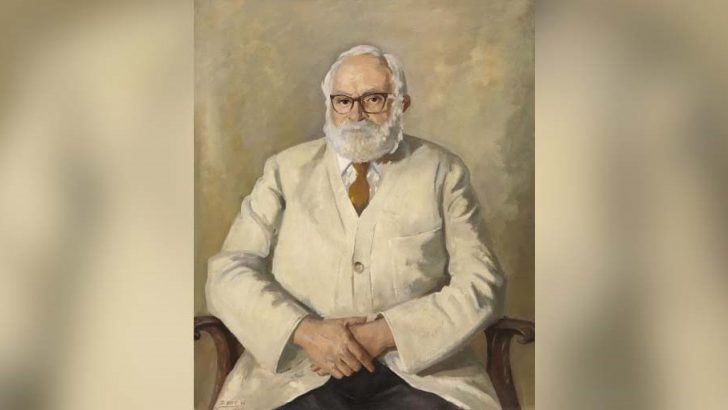The O’Mahony Journal (No. 43, 2020)
Nora M. Hickey (The O’Mahony Society who produces this annual can be contacted through Cristeoir D. F. O. O’Maony ‘Rosbrin’, 27 Woodlands, Montenotte, Co. Cork. email: dfomahoney@gmail.com
Here in Ireland there are many people who are well-known, and enjoyed by all but who never rise to the honour of a biography. One of those I have often wondered about is that wandering relator of things past, Éoin (‘The Pope’) Mahony.
But with the clan journal newly to hand I find there are many others too.
Fittingly, the lead article is on John O’Mahony, the best-known member of the O’Mahony Clan. He founded the Fenian Movement in the US in 1858 and was its ‘head centre’ until 1865. During the American Civil War (1861-65) he organised a Fenian regiment, the 69th Regiment of the New York State Militia (national guard), in which he held the rank of colonel.
Fenian Movement
Brian Sayers provides an insightful account of Colonel O’Mahony’s involvement in the early years of the Fenian Movement. Of particular interest is his account of the uneasy relationship between Colonel O’Mahony and James Stephens, who founded the Irish Revolutionary Brotherhood, also in 1858.
Mr Stephens emerges from Mr Sayers’ analysis as a devious autocrat. He appointed Colonel O’Mahony supreme organiser and director of the Fenian Movement and the IRB in America. However, at the same time he directed members of the Fenian Movement to report directly to him. In effect, while Colonel O’Mahony saw the Fenian Movement as an equal partner with the IRB, Mr Stephens considered it a subsidiary body, whose role was simply to provide money and arms for the IRB.
There are profiles of other distinguished members of the O’Mahony Clan. Ellen Woodlock (O’Mahony), of the Blarney Woolen Mills family, established the Children’s Hospital in Dublin in 1872 and had the Religious Sisters of Charity take charge of it from 1876 onwards. Later she assisted the St Louis Sisters with their foundation in Monaghan and established the St Joseph’s industrial institute for girls in Fairview in Dublin.
Sr Lorraine Mahony, OP, is fondly remembered. She died in 2020, following a life-time spent in education, as a teacher and administrator in the Archdiocese of New York. There is a profile of Diarmuid Ó Mathúna, renowned mathematician and research associate in the school of theoretical physics at the Dublin Institute for Advanced Studies, with an illustrated report of his reception of the Clans of Ireland Order of Merit in 2019.
In the 1960s Eoin became a national figure as compere of a Radio Éireann programme called Meet the Clans”
The main feature in this issue of the Journal is a report on a meeting at the Royal Irish Academy in February 2020 to highlight the legacy of Eoin O’Mahony. Charles Lysaght presented the keynote address on Eoin: barrister, genealogist, columnist and broadcaster. Commemorations were Eoin’s special interest. He was a moving spirit in the campaign to save Derrynane, the Kerry home of Daniel O’Connell.
An inveterate attender at the annual Ivy Day commemoration of Charles Steward Parnell, he was to the fore in organising the event in Wexford in 1956 to mark the centenary of John Redmond’s birth. In the 1960s Eoin became a national figure as compere of a Radio Éireann programme called Meet the Clans. Eoin did not neglect his own Clan. He organised the first ‘gathering’ in 1955 and subsequently every year until his death. Thereafter they have continued, courtesy of Eoin’s cousin, Peter Tynan O’Mahony.
The joy of the celebratory meeting in 2020 was overshadowed by the announcement by the Royal Irish Academy that it was discontinuing its association with the Éoin O’Mahony Bursary. This was funded by the friends of Eoin after his death “to keep alive his memory in tangible form”. It was administered by the RIA and grants were presented to promising scholars from 1979 onwards. The RIA claimed that a ruling of the Comptroller and Auditor General’s Office was the reason for winding up the bursary. However, his office, it seems, has stated that it “did not advise or direct the RIA to wind up the bursary”.
This has prompted Eoin’s next of kin to request the academy to return the bust of Eoin by Séamus Murphy, deposited in the academy in connection with the bursary, as they wish to offer it to the Crawford Art Gallery in Cork.


 ‘The Pope’ O’Mahony.
‘The Pope’ O’Mahony. 